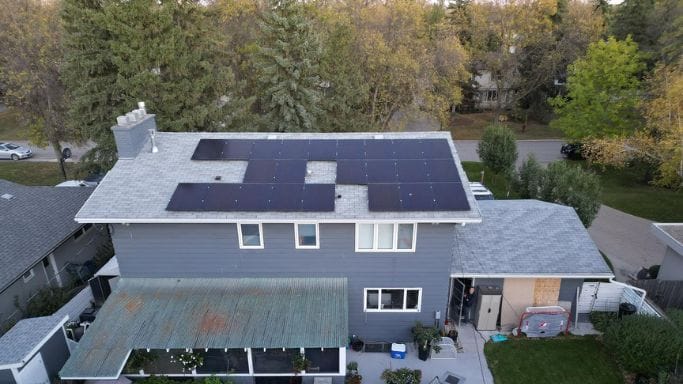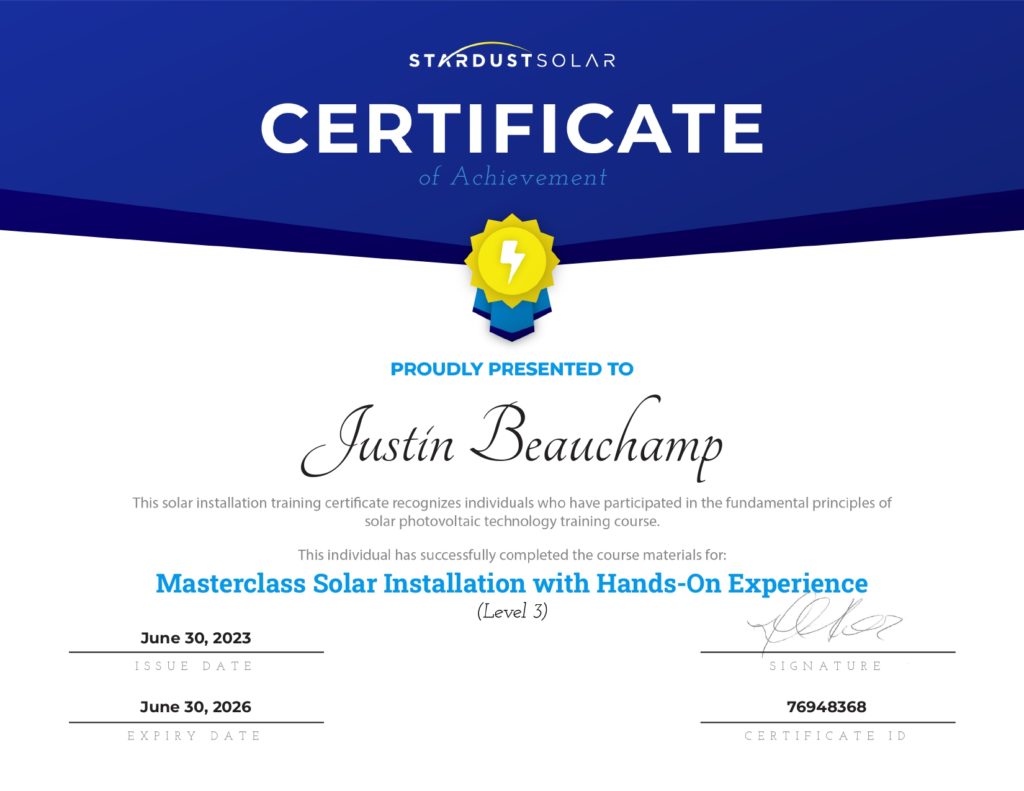Power outages from intense storms can leave homes dark for days. In a country like Canada, where harsh weather is common, the question arises: are solar panels Canada resilient enough to keep power flowing through floods, heavy rains, or high winds?
When utility poles fail, you need a dependable solar system designed to endure Canada’s wild elements and provide energy independence, even for off-grid adventures. Fortunately, with the right precautions, high-efficiency panels and robust batteries offer a path to sustained power through various applications and conditions.
Learn how Canadian solar solutions are built to face environmental challenges, from RV adventures to your home’s grid, keeping you prepared to explore and live safely off-grid, no matter the weather.
Each mounting type should ensure structural integrity through robust design and materials, which address local environmental conditions such as wind loads and snow accumulation. By carefully selecting the right mounting system, PV installations can achieve longevity and optimal performance.
Integrating snow guards and deflectors is vital to managing snow loads effectively. These devices help prevent snow accumulation on modules to reduce the risk of damage and maintain optimal performance. Snow guards act as barriers, while deflectors channel snow away from sensitive areas to ensure installations remain safe and efficient during winter or stormy seasons.
Understanding Canada’s Weather Conditions
Recently, severe thunderstorms rolled through Calgary, Alberta, causing extensive damage. Hail as large as Canadian toonies pummeled the northern parts of the city, battering roofs, shattering windows, and flooding streets. Environment Canada issued multiple warnings, predicting hail even larger than baseballs, paired with high wind gusts and torrential rain, which left northern Calgary residents concerned about the durability of their property. For Canadian solar systems, the unpredictable and often extreme weather can present unique challenges. This is especially true for homeowners aiming to achieve energy independence. Weather conditions impact PV modules differently.- High Winds: Gusts can potentially damage panel mounts or racks, which can misalign cells and reduce power output.
- Heavy Snow Loads: Buildup can limit sunlight exposure, adding weight that modules must be designed to withstand.
- Large Hailstones: Hail, particularly in sizes seen recently, may dent, crack, or even shatter less durable cells, demanding robust protection.
- Intense Rain: Heavy rains test waterproof seals and mounting systems, risking damage to the system and related components.
Panel Durability Standards
Panel durability is essential to ensure that PV installations meet environmental demands. Here’s a breakdown of some key standards and tests PV modules must pass to maintain quality and safety across various applications.IEC 61215 Standard
This international standard ensures that cells are built to endure long-term outdoor conditions. It includes rigorous testing, such as thermal cycling, which identifies weaknesses that might cause performance failures. For example, if a module passes all 19 tests, including prolonged exposure to high temperatures and humidity, it can better withstand diverse climates and operate reliably over time.IEC 61730 Standard
This standard, focused on safety, outlines requirements to prevent electrical shock, fire hazards, and structural failure in PV modules. It meets essential construction and operation guidelines to ensure PV modules remain safe in various residential, commercial, and industrial settings. It’s a comprehensive measure to minimize any risks associated with improper panel usage or environmental stresses.Wind Load Rating
Panels are tested for resistance to wind loads to confirm their durability in high-wind areas. Standards like ASCE 7-16 specify calculations for wind load based on panel tilt angle and site characteristics to add confidence that modules are structurally sound even in challenging, windy conditions.Hail Impact Testing (UL 1703)
This test simulates hail impact using a high-velocity steel sphere or ice ball to assess impact resilience. Modules that pass UL 1703 demonstrate high resistance to common hail sizes, ensuring longevity in areas prone to hailstorms.Panel Mounting and Structural Integrity Options
Mounting and structural integrity are critical for maximizing efficiency and durability. Your choice of mounting system impacts the panels’ performance and the installation’s safety.Key Mounting Options
| Roof-mounted | Ideal for residential applications, these mounts utilize existing structures to reduce land use. They come in fixed or adjustable types to optimize module exposure. |
| Ground-mounted | Suitable for larger installations, ground mounts provide flexibility in orientation and tilt. They can withstand higher wind loads and are easier to maintain. |
| Pole-mounted | These are elevated structures that minimize shading and allow for better airflow around the cells to enhance efficiency. |
Snow Load Calculations and Management Strategies
Snow load calculations ensure the structural integrity of PV installations in snowy countries like Canada. According to ASCE 7-16, there are factors to consider to determine the load capacity of cells.Key Aspects
| Ground Snow Load (Pg) | This is the weight of snow on the ground, varying by geographical location. |
| Roof Slope Factor (Cs) | Adjustments are made for sloped roofs, as snow tends to slide off steeper surfaces. |
| Exposure Factor (Ce) | This accounts for wind effects, which can influence snow distribution. |
Wind Resilience Techniques
In Canada’s windy regions like Alberta, ensuring the resilience of panel installations against high winds is vital. Implementing wind resilience techniques can enhance structural integrity and performance.Key Techniques
- Heavier-Gauge Bolts: These bolts are perfect for providing greater strength and durability to secure the cells more effectively against wind uplift and lateral forces.
- Cross Braces: Installing cross braces between mounting supports increases rigidity and stability, which distributes wind loads evenly across the structure. This added support helps prevent structural failure during storms.
- Wind Deflectors: Adding wind deflectors strategically redirects airflow around the cells to minimize wind pressure and turbulence. These devices reduce the risk of panel displacement and damage.
Hail Protection Measures
Hail can pose a significant threat to PV systems, potentially causing physical damage to modules and reducing their efficiency. Implement effective hail protection measures to safeguard your investments and ensure long-term performance.- Choose solar cells made from tempered glass or other impact-resistant materials that can withstand hail strikes without shattering.
- Select modules that have undergone rigorous testing, such as those compliant with IEC 61215-2, which simulate hail impacts to assess durability.
- Install PV modules on elevated mounting systems to increase clearance from hail. This minimizes the risk of direct hits and allowing water runoff.
- Conduct regular inspections and maintenance to determine and address possible vulnerabilities and ensure the integrity of the solar energy system.
Weather-Resilient Panels
Regions with extreme temperature fluctuations require weatherproof modules. Mono-PERC (Passivated Emitter Rear Contact) cells are particularly effective due to their enhanced efficiency and ability to maintain performance under varying conditions. These modules utilize a unique design that reduces energy loss, making them ideal for colder climates. Other materials to consider include:- Monocrystalline Silicon: Known for high efficiency and longevity. Perform well in low-light conditions.
- Polycrystalline Silicon: More affordable but slightly less efficient and suitable for moderate climates.
- Thin-Film Cells: Lightweight and flexible. Adapt to different surfaces but typically have lower efficiency.

Install Durable Panels Today
Extreme weather conditions demand panel systems that can withstand high winds, heavy snow, and hail. Selecting weather-resilient cells, such as Mono-PERC cells, and implementing protective measures ensures your energy system remains efficient and reliable. Understanding durability standards and utilizing robust mounting solutions further enhances the longevity of your investment. Don’t compromise on your energy independence. Choose reliable solar panel installation with MAG Solar to ensure your system is built to endure Canada’s harsh elements. If you have questions or seek more information, contact us today to understand your panel options.Frequently Asked Questions
Can solar storms affect photovoltaic panels?
While solar flares could theoretically harm your solar panels, the actual risk is very low. Thanks to technological advances and our planet’s protective measures, your solar panels are likely to endure a photovoltaic flare without any issues.
Do thunderstorms affect my PV modules?
In reality, solar cells are built to resist high winds and hail, and most can handle strong thunderstorms. However, there is still a risk of damage from lightning strikes.
How do you protect solar panels from lightning?
Get grounded. Establishing a connection to the ground helps discharge static electricity that builds up in aboveground structures. Hence, reducing the risk of attracting lightning. Lightning arrestors and surge protectors can absorb electrical surges to safeguard your equipment.

